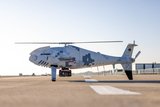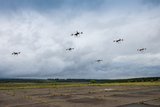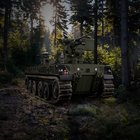UDT 2011: Unmanned injection called for navy applications
Undersea naval operations will encompass 'more and more unmanned' technology for dull, dirty and dangerous missions if appetites for casualty reduction continue to increase, according to a senior Royal Navy officer.
Speaking at the Undersea Defence Technology (UDT) conference in London, RAdm Amjad Hussain, director of precision attack (MoD Capability), controller of the navy, described how unmanned technology would continue to rise for mine countermeasure operations specifically, whether in the form of UUVs, USVs or UAVs.
'A lot of [unmanned technology] is miniaturised and we are now valuing persistence more than we have in the past,' he explained. 'Because it is unmanned, it is not going to be [deployed] in the UK but it's going to be away somewhere else.'
Outlining how the navy had undertaken an exercise involving an 'unmanned toy helicopter', controlled by an iPhone application, Hussain described how a sailor with no training or instruction had learnt to fly the vehicle safely within five minutes. 'That is what we are experiencing – the use of the gaming software industry to help us with our training.
'The world is changing fast and in the next 20 years, gigabyte demand will reach one million times what it is today. Do we have the bandwidth to do that? How many satellites do you need to distribute that information?' Hussain asked.
In addition, Hussain described how all future undersea assets would have to consider stealth properties, and warned against more traditional programmes of record.
'Technology is moving very fast but we need to get out of long programmes which we can't unlock and which exceed what we might have in the budget. Demand is more responsive and reactive to change with equipment pulled off-the-shelf quite quickly, changed, used and deployed unless stuck in a 25-year programme.'
He also claimed that the Royal Navy was looking to reduce the average time from design to development from 12 years down to three years and then six months beyond that. Hussain stated that industry must be 'flexible' enough to meet such a requirement.
More from Uncrewed Vehicles
-
![Tekever unveils new swarm-controlling UAS]()
Tekever unveils new swarm-controlling UAS
Tekever has manufactured the AR3, AR4 and AR5 UAS with all systems sharing common electronics and software architecture, which has enabled the reuse of ground segment elements within the new ARX UAS.
-
![Ready for the race: Air separation drone swarms vs. air defence systems]()
Ready for the race: Air separation drone swarms vs. air defence systems
As the dynamics of aerial combat rapidly evolve, Chinese scientists have engineered a sophisticated air separation drone model that can fragment into up to six drones, each capable of executing distinct battlefield roles and challenging the efficacy of current anti-drone defences such as the UK’s Dragonfire laser system.
-
![Israel’s MALE UAVs ‘must adapt’ to Iranian-made air defences]()
Israel’s MALE UAVs ‘must adapt’ to Iranian-made air defences
Advancements in air defence technologies have begun to reshape aerial combat dynamics in the Middle East, as illustrated by recent events involving the Israeli Air Force and Hezbollah.
-
![Hundreds more UAS sent to Ukraine forces with thousands more on the way]()
Hundreds more UAS sent to Ukraine forces with thousands more on the way
Both sides of the Russia-Ukraine war have been using UAS for effective low-cost attacks, as well as impactful web and social media footage. Thousands more have now been committed to Ukrainian forces.
-
![AI and software companies selected for US Army Robotic Combat Vehicle subsystems]()
AI and software companies selected for US Army Robotic Combat Vehicle subsystems
The US Army has intentions to develop light, medium and heavy variants of the Robotic Combat Vehicle (RCV) as part of the branche’s Next Generation Combat Vehicle family.


























